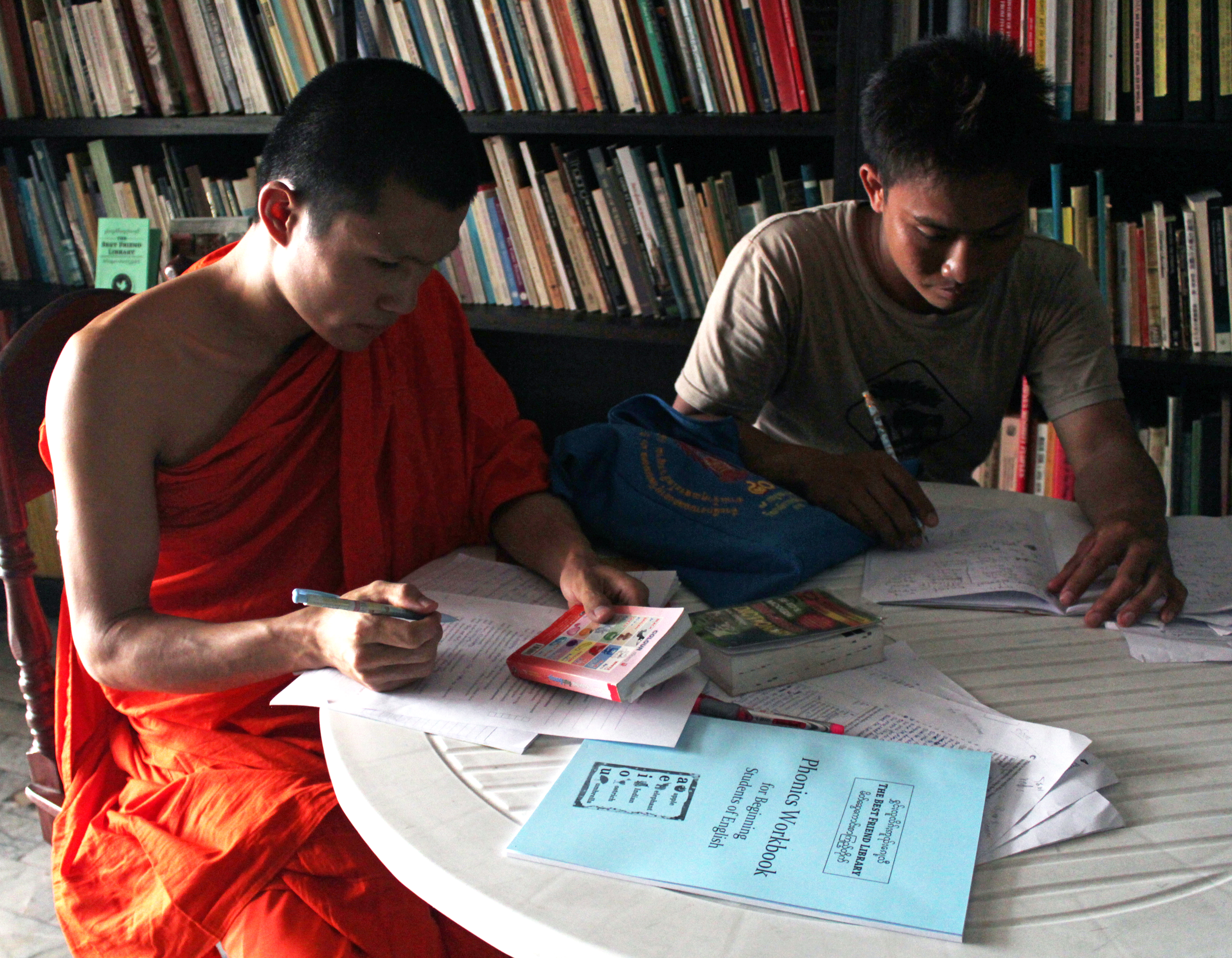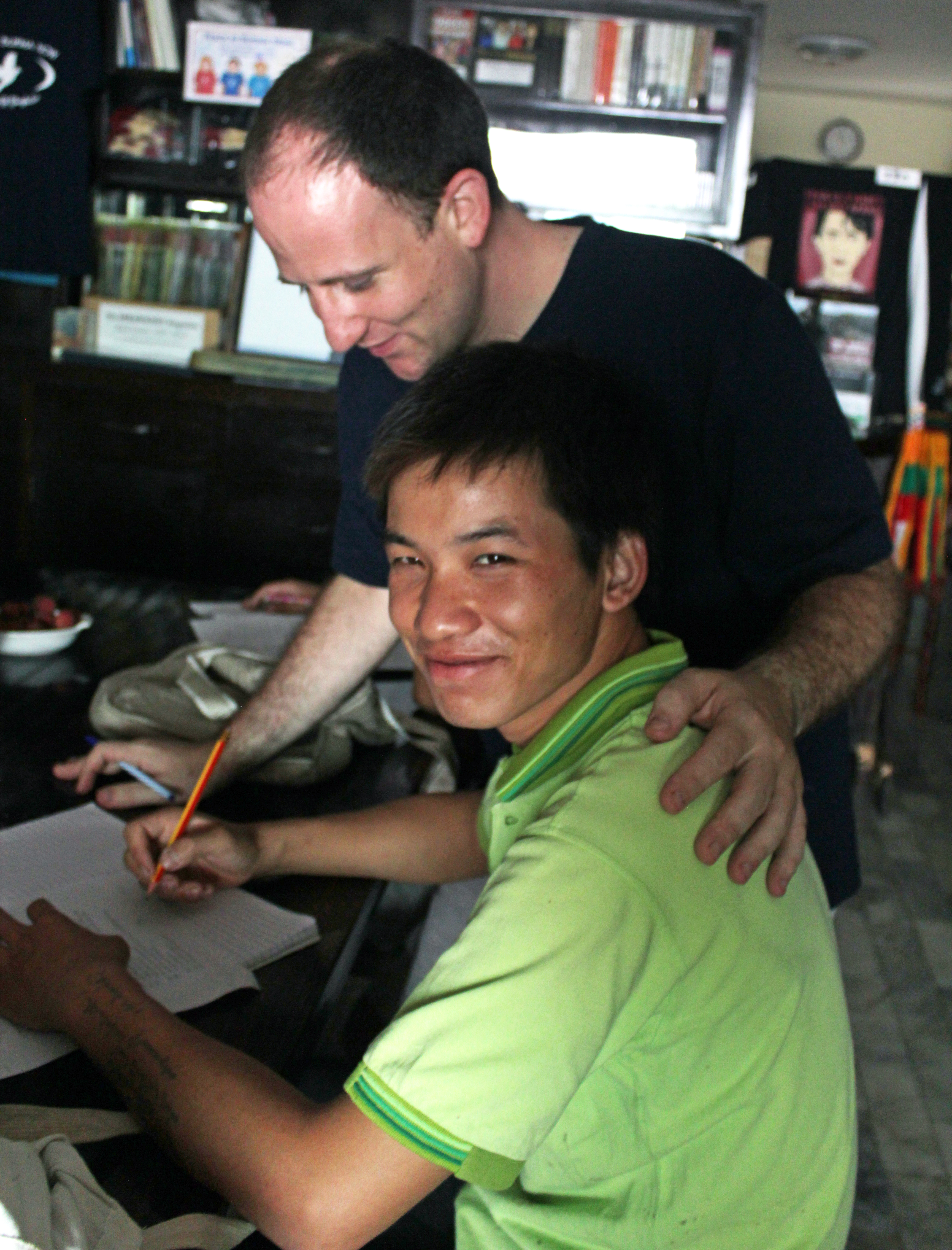While wide smiles and firm handshakes between presidents forecast an optimistic future for the Burmese economy, President Thein Sein’s recent visit to the White House (a visit that has been almost 50 years coming) isn’t enough of an affirmation for Burmese migrants and refugees hoping to repatriate back to their home country. 
Yes, ceasefires seem to be holding in major cities. Yes, the number of registered refugees is decreasing (at least according to the UN Refugee Agency). And yes, Burmese migrants living in cities like Chiang Mai no longer face immediate dangers like slavery, conscription or “Burmanisation.”
As ‘true’ as the above may be, Burmese migrants such as 29-year-old ‘Ying Loi Don’ still live in fear; the young woman explained that she cannot tell me her real name because she worries about being persecuted if she ever returns to Burma.
Living in Thailand for the past 13 years, Ying has received medical training that allows her to conduct workshops on health and safety at refugee camps near the Burmese border. Although life seems to have drastically improved since the days of moving from village to village, watching friends, food and her livelihood disappear as Burmese soldiers reigned supreme, Ying one day wishes to return to Shan State, the part of eastern Burma she calls home.
“I want to go back to my home,” Ying said as matter-of-factly as a homesick vacationer.
Although President Thein Sein proclaims committers of intercommunal violence will be brought to justice, and organisations like the UN Refugee Agency (well, mostly their PR department) say they believe voluntary repatriation is on the horizon, migrants like Ying do not agree that repatriation is feasible at this time.
Hkun Htee, a 21-year-old who left his home in Shan state to come to Chiang Mai, said young men like himself (who in Burma, are prime for the conscription pickin’) are not able to return to Burma.
“I came to Thailand because the Burmese soldiers were coming to my village to collect us to be soldiers,” Hkun explained. “There is so much fighting with ethnic groups and the Burmese army. We cannot do anything but wait for the government.”
Even if by the off-chance migrants like Ying and Hkun wouldn’t be in immediate danger of subjection to sexual slavery, forced conscription or being killed, returning to their home villages would only perpetuate poverty for their families.
“In my village when they are fighting, we have to stop everything,” Hkun continued. “We cannot do business. We cannot farm. We cannot plant any crops. We used to have a big farm, but my father hasn’t been able to work for two years.”
Living in Chiang Mai, Hkun is able to attend university and make enough money to support his family back in Shan State. Women like Ying have educational opportunities that in Burma are not options, but impossibilities.
“We don’t get a chance to gain this type of knowledge and education in our village because we have to move again and again,” Ying said. “Burmese soldiers come to our village and force us to leave. If we don’t leave by the deadline they give us, they will kill us.”
The above is a ‘best scenario situation’ for women living in villages like the one Ying comes from. More commonly, when word of an approaching Burmese battalion arrives, men flee to the jungle, while women and children are left behind as sitting ducks.
During one such ‘visit’ from a group of soldiers, Ying said her whole village was forced to relocate, and had to leave most of their much-needed food and supplies behind. Young men could not risk going back to retrieve the lost goods for fear of capture and conscription. Instead, Ying’s friend’s mother went back. She was never seen again – Ying said it was likely that the mother was raped and killed.
Since their move to Chiang Mai, both Ying and Hkun became actively involved with The Best Friend Burmese Library, a nonprofit organisation that works to spread education, awareness and encourage activism to support human rights in Burma. The organisation was originally started in 1999 by two young monks hoping to educate and embolden people to bring peace to Burma.

Garrett Kostin, the director of The Best Friend Library in Chiang Mai, said he also strives to quash what he referred to as a major source of conflict in Burma: “the one identity, one culture, one country mentality.”
“Burma wants unrivaled control,” Kostin said. “Even in states where ethnic minorities exist, the Burmese government and military can make people move and they can take their resources without compensating them in any way.”
Kostin explained that in many areas where ethnic minorities live – or maybe more accurately, now merely exist – land confiscation is a huge problem since most of the territories are tangles of jungle ripe with the resources central Burma lacks.
“These populations are subdued by Burmese soldiers so their resources can be taken,” Kostin continued. “Not only that, but they don’t respect the ethnic peoples’ culture. It’s become illegal for minorities to teach in ethnic languages; they must be instructed in Burmese language.”
Although The Best Friend Library has been successful in helping educate, support and provide resources for Burmese migrants and refugees, the smaller-scale organisation is having to cinch its belt ever tighter as funding for their cause grows harder and harder to come by.
Previously supported by international donors with seemingly bottomless access to resources crucial to the survival of refugees living on the Burmese border, The Best Friend Library was receiving a fairly consistent influx of funding. But since larger-scale organisations are now able to operate inside Burma, those living on the outskirts are no longer a top priority.
“This is a good thing,” Kostin said. “It’s extremely important to build up civil society in Burma, but it’s coming at a cost to organisations like ours trying to help a huge migrant and refugee population outside the country that is still in need of services.”
With the number of registered refugees at over 80,000 (not counting the additional 60,000-plus unregistered refugees also in need of help) the dilemma leaves the library with few options. Kostin said they are going to have to think “more creatively” about proactive ways to reel in funds.
“It’s a lot more work,” Kostin said. “But it keep organisations honest. The ones who aren’t looking to work hard will have financial difficulties. The ones willing to interact with communities and care enough to put the work in will find a way to make it…hopefully.”
Luckily, hope may not be as hard to find as Kostin anticipated. After opening up a booth representing The Best Friend Library at the Chiang Mai International Music Festival, Kostin was approached by professional event volunteer organisers, Ramlah Jafri and Basil Sutherland, who offered to set up a fundraising event that might help the library’s cause.
“When Garrett mentioned to us that funding was insufficient to meet the growing needs of the library, we offered to help,” Ramlah said. “We fully realise the vitally important work Garrett was doing to relieve the plight of Burmese refugees.”
Hosted by the Imperial Mae Ping Hotel, Kostin said the Gala Charity Dinner and Dance: Burma in the Spotlight is the biggest fundraising event he has ever been involved in.
The Gala Charity Dinner and Dance: Burma in the Spotlight will be held on Saturday, 1st June, and includes a buffet dinner, silent art auction, cultural dance performances and live music featuring renowned Thai musician, Dang Fantastic.
Tickets are available for 850 baht each at The Best Friend Library on Nimmanhaemin Soi 13, Rimping Supermarkets, Hillside Condo 4 and the Imperial Mae Ping Hotel.
For more information, visit: www.thebestfriend.org/chiangmai
/* Style Definitions */ table.MsoNormalTable {mso-style-name:”Table Normal”; mso-tstyle-rowband-size:0; mso-tstyle-colband-size:0; mso-style-noshow:yes; mso-style-priority:99; mso-style-qformat:yes; mso-style-parent:””; mso-padding-alt:0in 5.4pt 0in 5.4pt; mso-para-margin:0in; mso-para-margin-bottom:.0001pt; mso-pagination:widow-orphan; font-size:12.0pt; font-family:”Calibri”,”sans-serif”; mso-ascii-font-family:Calibri; mso-ascii-theme-font:minor-latin; mso-fareast-font-family:”Times New Roman”; mso-fareast-theme-font:minor-fareast; mso-hansi-font-family:Calibri; mso-hansi-theme-font:minor-latin; mso-bidi-font-family:”Cordia New”; mso-bidi-theme-font:minor-bidi; mso-bidi-language:AR-SA;}